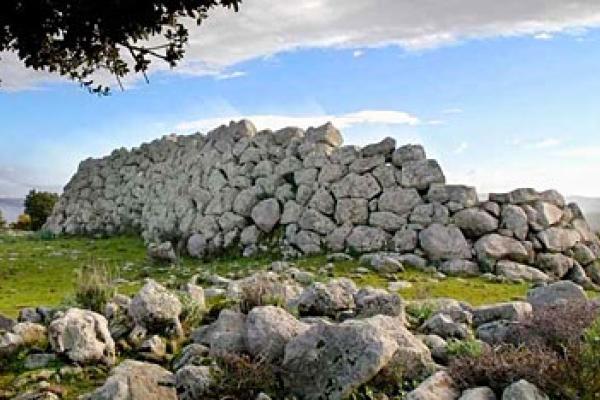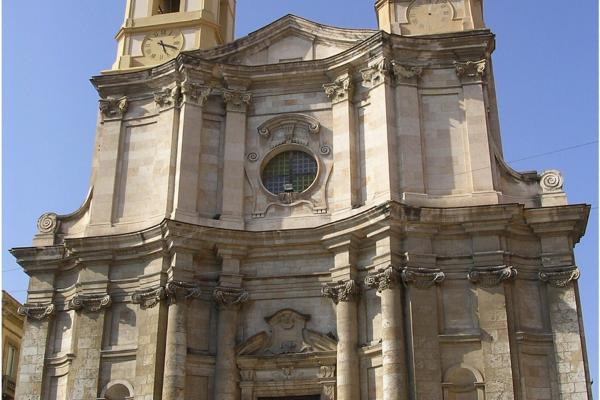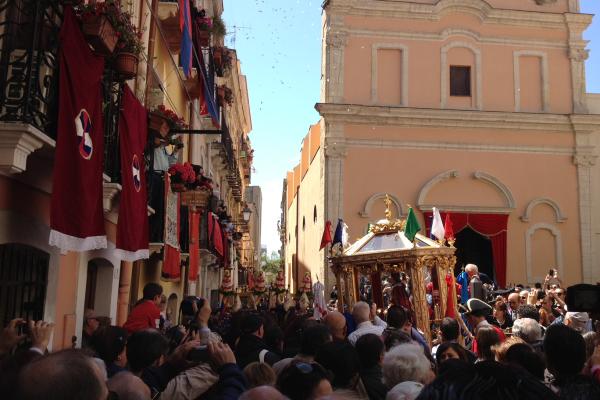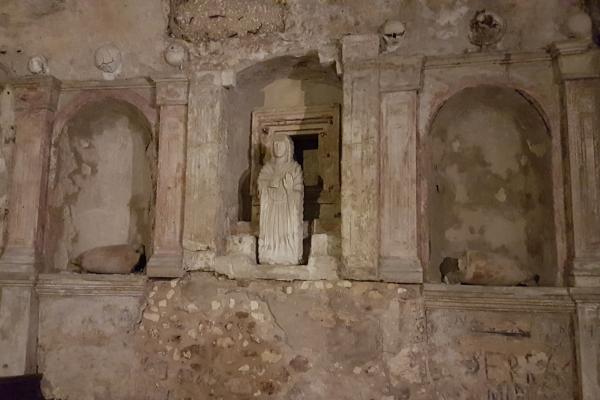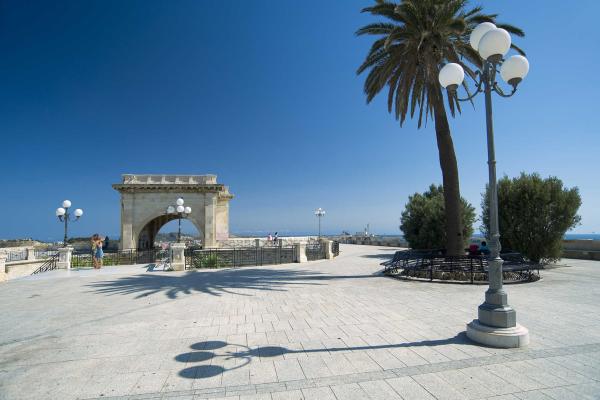The church of San Sepolcro, in the heart of the district of Marina di Cagliari, has an ancient and fascinating history, which probably began in the 14th century and is linked, according to some scholars, to the figures of the Knights Templar and, above all, to the events of the Confraternity of the Most Holy Crucifix, also known as that of the Oration or of the Good Death, a religious order established in 1564, engaged above all in giving a respectable burial to the corpses of poor people and outcasts.
In 1992, on the occasion of renovation work carried out under the surface: a large room full of earth mixed with human bones was found. In fact, before the edict of Saint Cloud (1805) issued by Napoleon, bodies were buried within the town walls. It may have been these same religious brothers who dealt with the burials and it seems that they had Roman catacombs brought from the Holy Land so that the deceased could be united with the holy martyrs for eternity.
The church of San Sepolcro, in the heart of the district of Marina di Cagliari, has an ancient and fascinating history, which probably began in the 14th century and is linked, according to some scholars, to the figures of the Knights Templar and, above all, to the events of the Confraternity of the Most Holy Crucifix, also known as that of the Oration or of the Good Death, a religious order established in 1564, engaged above all in giving a respectable burial to the corpses of poor people and outcasts.
In 1992, on the occasion of renovation work carried out under the surface: a large room full of earth mixed with human bones was found. In fact, before the edict of Saint Cloud (1805) issued by Napoleon, bodies were buried within the town walls. It may have been these same religious brothers who dealt with the burials and it seems that they had Roman catacombs brought from the Holy Land so that the deceased could be united with the holy martyrs for eternity.
The crypt tells the story of a past of solitude and alienation and of charitable and considerate people who wanted to ensure that the poor and the unfortunate would have a tomb. The Crypta del Santo Sepolcro (Crypt of the Holy Sepulchre) is one of the most fascinating underground spaces in the town. As soon as you cross the entrance to the church, you will reach the crypt via a trapdoor situated in the centre of the nave: going down a short flight of steps, you will enter the three barrel-vaulted rooms that make up the underground vault. The spaces were probably dug out of the rock and burial took place on the floor using mounds of earth. The main room is painted completely black, using the technique of charcoal tempera paint, as if the walls were covered in gloomy drapes. In one of the rooms, you will see a masonry sepulchre, perhaps destined for the body of an illustrious character. You will notice traces of frescoes on the walls: the most significant painting depicts 'Death' portrayed as a skeleton wrapped in a regal ermine robe, with an hourglass in one hand, a symbol of the passing of time, and a scythe in the other. On the blade you will see a grim warning: nemini parco, 'I spare nobody'.










